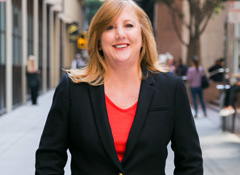Opinion: how PRs and ‘real’ news organisations should tackle fake news
Emma Morton, senior media strategist at Ruder Finn, on how the media industry can move forward from fake news.
HOW did fake news leapfrog real stories?
By speaking out, celebrity heavyweights raised its profile. The press, politicians and social commentators spoke on it, plus the US President and Facebook chief. Sounding the alarm ramped up its news value.
Some of the noise was driven by those who aren’t sure what it looks like. Unfamiliarity with new media often triggers a rush to discover what it’s all about. There’s a touch of FOMO. Recall Twitter’s initial rise. People hashtag everything.
Many find it an amusing social media side show, posing no threat to the real thing. Established newspapers and digital sites should focus on delivering well-crafted news and analysis, they believe.
Gorkana’s UK Pulse data reveals that consumers trust real people – friends and family – for information, and rate radio more reliable than digital news and social media. Regional newspapers featured low on the survey’s ‘trust’ list.
Fake news should encourage greater investment in print and quality digital titles, funding investigation teams equipped to expose corruption and hold people to account. As traditional titles tell their readers that quality news has a price, the old fashioned ‘scoops’ and human interest stories must flow through.
Many owners of regional news groups continue to make first-rate reporters redundant, close town centre offices and outsource editing to ‘subbing hubs’ based hundreds of miles away. You can’t ‘fake’ local news – reporters need to have an ear to the ground.
Fake news threatens to have the greatest impact on communicators with celebrity, food or healthcare clients. Flavour of the month eateries face a spate of phoney ‘look what I found in my bun’ or ‘former chef exposes truth about your salad’ pieces.
Healthcare implications include falsified reports and photos of medication ‘side effects’. These stories could range from “I took this pill and turned green” to damaging messages that provoke fear and deter people from treatments.
Communicators must smooth the path here. Credible voices are needed to reassure the public if panic strikes. They can help organisations to deliver accurate information through the right channels and respond appropriately.
More than ever, communicators must hold their nerve. When fake news surfaces, they should remember the vital role they play, and ensure that their clients communicate with integrity.
- Gorkana UKPulse is an annual research survey undertaken by Gorkana, facilitated through Opinion Matters. A sample size of 10,050 UK Adults (aged between 16-75) are asked more than 120 questions regarding their lifestyle, attitude and media consumption.
- If you are interested in hearing more about UKPulse and how we can help identify media consumption habits of your key target audiences, please contact: UKPulse@gorkana.com.





